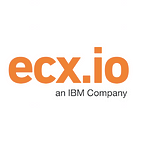Digital roadmap: Strategy suggests actions
Digitalisation is now on the agenda for most companies, only where to start and how to tackle the transformation? Many start with a pilot project, for example, to test a new sales or communication channel. Other companies start by digitising work processes: replacing paper-based processes with automated workflows, where the main focus is on switching to a new technology. It seems that the search for the right system or platform is the focus of the project. If an agency is consulted it is to assist in the selection and implementation of the technological solution. There is also a similar approach to the maintenance of equipment: whatever is the oldest is replaced first. In this case, the agency assigned is tasked with a relaunch: first and foremost, the respective website, e-shop or customer portal should have a modern design.
Each of these steps can be appropriate, but as single measures, they fall short. Even the effect of a successful pilot project is lost if further implementation is not planned. Saving of time and resources through digitised processes is often urgently needed to beat the competition, however this does not automatically generate additional value for the user. And neither a new technological platform nor a better design can help if new competitors with sophisticated business models conquer the market. Therefore, at the beginning of the digital transformation, there should be an analysis of the client’s own offering, the environment and the customer’s point of view rather than individual measures being taken.
Customer view, analysis and strategy: The digital roadmap
A full-service digital agency will support and advise costumers in this regard from the outset, with appropriate tools and methods for the development of their digital strategy. We identify the key areas of activity with the customer — the fields of engagement — and then structures the entire process in the form of a digital roadmap.
First of all, methods are employed to evaluate the business model, the market, the environment and the competition. Of course, a lot of input from the customer is required in order to understand the structure and the specifics of the company in question and its clientele. At the same time, the consultants bring their project experience in each sector: best practices, new developments and expectations, which are also transferred from the B2C sector into the B2B sector (consumerisation). Essentially the entire supply chain is always considered.
The customer’s point of view is very important. In companies the “inside-out” perspective often predominates, that is, the view strongly influenced from the inside, and it is the role of the agency to incorporate the outside perspective into the project and to raise awareness among the suppliers: How do our customers perceive what we offer, what are they looking for and what do they expect? This is examined in the form of customer interviews and also by following the customer journey.
An example: An insurance company wanted to renew their customer portal, which was already a bit outdated and was not used by the customers as much was hoped. In contrast to the banking sector, which is already responding to sophisticated business models through fintech start-ups, insurance companies are often still classically oriented, with field sales teams, sales offices and fixed product packages or policies to be sold. The development of the customer portal also followed the inside-out view. The project examined the entire process: What offers are integrated into the portal and what would a customer expect? What added value can the new customer portal offer? But also: Which additional processes could be integrated into the platform to improve the way things run internally?
The agency can support the structuring of the actions very well since it can evaluate the effort required for individual tasks based on their own experience. Generally, it is clear to the company that a new web shop, for example, requires the integration of data from existing systems such as merchandise management or logistics. What they often don’t know is that this data isn’t sufficient in its current form. It has to be prepared and enriched, and time and resources have to be planned into the project for this. A web shop model can, for example, be created within five days. Customers therefore immediately get an impression of how the finished product and the user interface could look and they can test and improve it. However, in order for the new distribution channel to actually work, it also needs the necessary logistics and changes in the process, and employees have to be trained or newly recruited. This is more costly but is entirely achievable within six months.
The result is a digital roadmap which covers the objectives and actions for the next three years. The first few months are described in more detail and broken down into concrete steps so it is clear which task is next. The actions described at the outset, such as process digitisation, pilot and relaunch projects, can be part of these measures — and in this form, as part of an overall strategy, they are also effective and sustainable.
